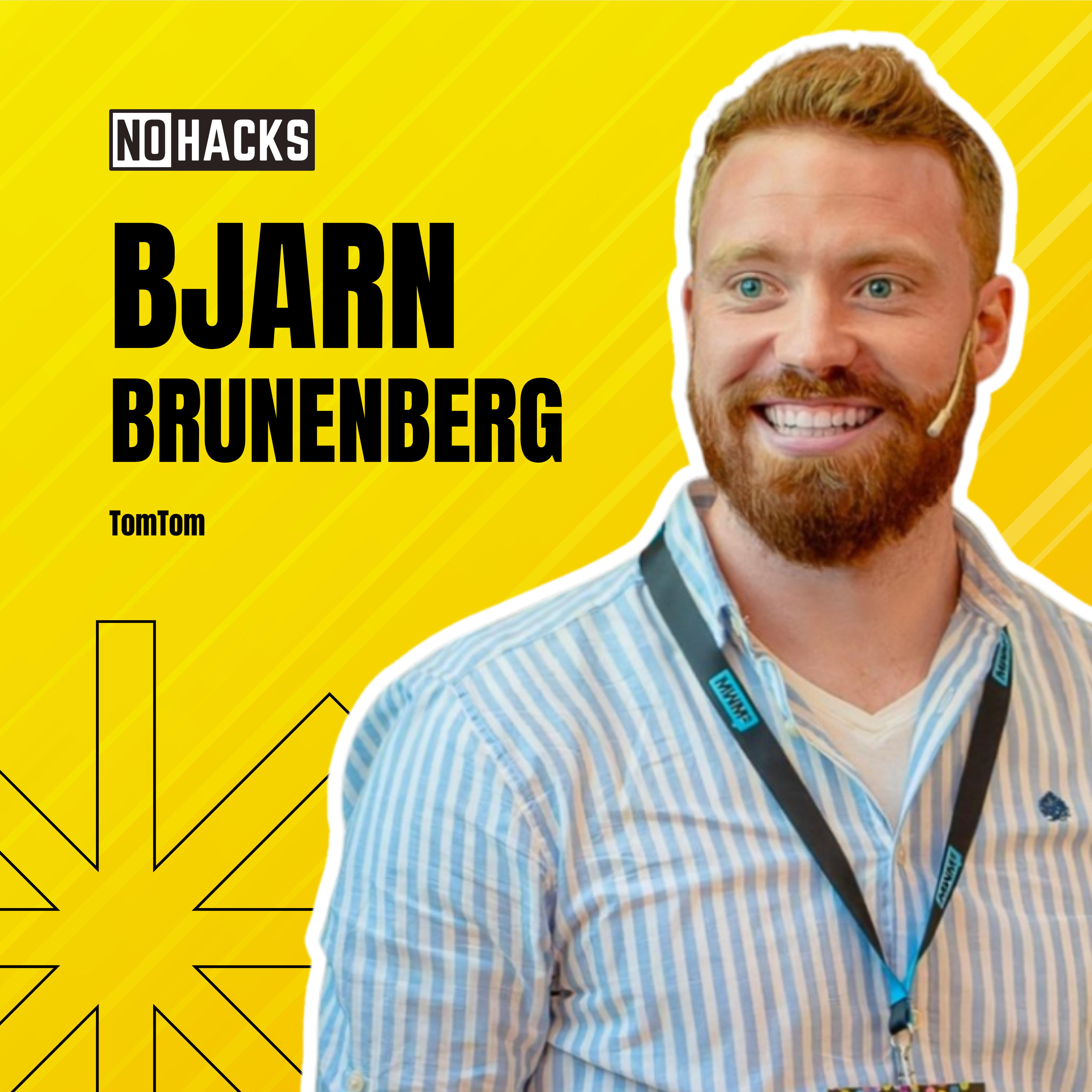In the latest episode of the No Hacks Podcast, I had an insightful conversation with Bjarn Brunenberg, Experimentation Lead at TomTom. Bjarn is passionate about helping businesses turn ambitious goals into actionable outcomes using frameworks like OKRs (Objectives and Key Results) and strategic experimentation.
With years of experience driving product growth and innovation, Bjarn shared his thoughts on the power of OKRs, how they differ from KPIs, and the importance of aligning teams to achieve meaningful results.
Here’s a recap of the key takeaways and highlights from our conversation.
What Are OKRs, and Why Are They Essential for Business Growth?
Bjarn kicked off by explaining the difference between OKRs and KPIs, a common point of confusion in many organizations:
- OKRs are about setting ambitious goals and breaking them down into measurable steps to track progress.
- KPIs, on the other hand, are the metrics that measure ongoing performance and outcomes.
“OKRs aren’t just about setting goals—they’re about making them real for every single person on your team,” Bjarn explained.
He emphasized that OKRs work best when they’re tied to specific actions that individual teams can own, rather than vague, high-level objectives like “increase revenue.”
The Biggest Pitfall: Lack of Alignment
Bjarn highlighted a key challenge many companies face: the gap between management’s vision and the teams executing the work. He cited a Harvard Business Review study, where 82% of employees believed they were aligned with company strategy, but only 23% could articulate what those goals actually were.
“The problem isn’t ambition—it’s alignment,” Bjarn noted.
To bridge this gap, businesses need better communication and tools that make goals clear, measurable, and connected to team-level contributions.
Frameworks That Turn OKRs Into Action
Bjarn shared two of his favorite frameworks for translating big objectives into actionable steps:
1. KPI Tree
This method starts with a high-level business goal (e.g., revenue growth) and breaks it down into measurable KPIs and sub-metrics. The sub-metrics act as leading indicators that teams can directly impact.
2. Opportunity Solution Tree (OST)
Developed by Teresa Torres, this framework helps identify customer pain points and map them to solutions. By pairing the KPI Tree with the OST, teams can align their OKRs with customer needs and opportunities, ensuring their efforts are both impactful and measurable.
“If you can’t measure it, it’s not a good metric,” Bjarn emphasized.
Lessons from Experimentation at TomTom
As Experimentation Lead at TomTom, Bjarn plays a critical role in refining their Go Navigation App, helping it compete with giants like Google Maps and Waze.
One of the funniest moments he shared was a mistake during a pricing test. A misconfiguration led to unexpected pricing changes for customers, sparking complaints. While stressful at the time, it taught Bjarn the value of structured QA processes and checklists.
“Sometimes the best lessons come from failures—it’s all part of the experimentation process,” Bjarn said.
Applying OKRs to Personal Growth
Bjarn also spoke about how he uses OKR principles in his personal life to bring clarity and focus to his goals. Whether it’s learning Portuguese, improving his keynote speaking skills, or preparing for a dream of speaking at a growth conference in Brazil, he breaks these ambitions into actionable steps.
“OKRs are all about setting ambitious goals and figuring out the steps to get there,” Bjarn shared.
By identifying specific objectives and tracking progress, he ensures his personal growth goals remain achievable, even when life feels overwhelming.
Key Takeaways
Bjarn’s insights offer a practical roadmap for anyone looking to improve their goal-setting processes and team alignment:
- OKRs and KPIs serve different purposes but complement each other when used correctly.
- The KPI Tree and Opportunity Solution Tree are powerful tools for breaking down goals and aligning them with actionable tasks.
- Communication and clarity are essential for bridging the gap between management’s vision and team execution.
- Experimentation isn’t just for products—it’s a mindset for both business and personal growth.
About Bjarn Brunenberg
Bjarn Brunenberg is the Experimentation Lead at TomTom, where he focuses on driving growth through structured experimentation and innovative product development. He is passionate about creating frameworks that simplify complexity and inspire teams to achieve their best.

